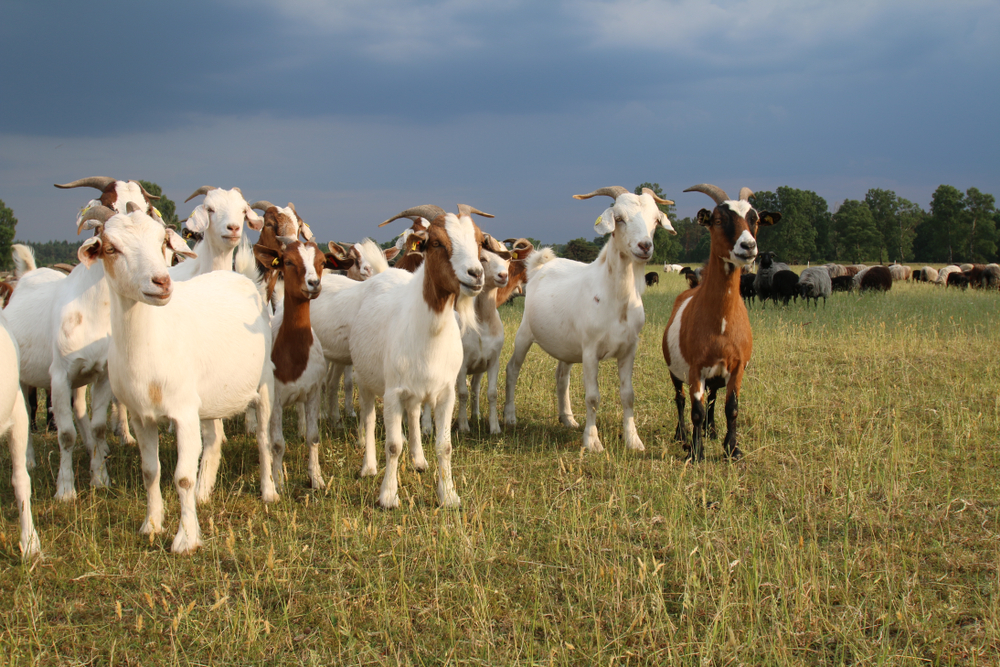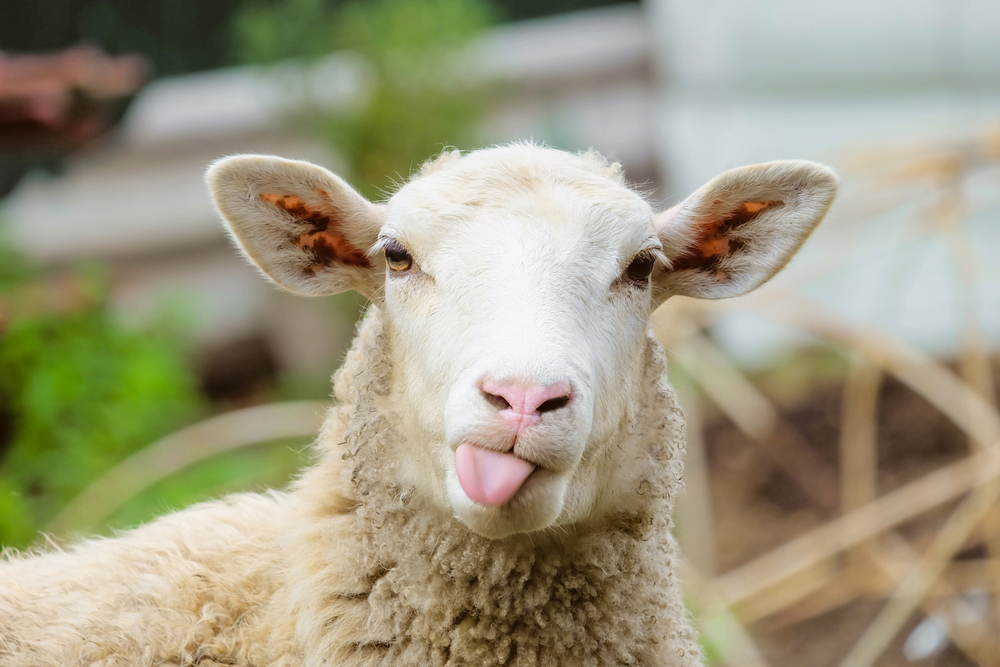
Blocked Goats and Sheep 101
Tuesdays with Tony
A few weeks ago, we talked about being extra careful to monitor your male cats’ litter box usage due to the risk of urinary obstruction. We’re now going to talk about a similar topic in a different (louder, much less refined) species: goats and sheep. While the general problem is the same, the specifics are a bit different, so let’s get into it.
This disease is an unfortunately common one of the castrated male small ruminant, and is known as obstructive urolithiasis, though more simply called urinary blockage. For the purposes of this review, I’ll mostly be talking about goats because they tend to be the main pet species around here, but the same things apply to sheep.

A quick terminology review for the uninitiated human: intact male goats are known as bucks, intact male sheep are known as rams, and castrated males of either species are known as wethers. There’s a saying that goes around the sheep and goat circles: “friends don’t let friends have pet wethers.” I don’t know why anyone would want to be owned by anything other than a cat, but perhaps I’m biased.
Wethers have a bad habit of accumulating grit and stones in their urinary tract due to diet and inadequate water intake. The disease is most common in the castrated males because the lack of testosterone prevents widening of their urethra at specific points. This means there are a few very, very narrow areas along the offramp from the bladder where they can get a fatal traffic jam!
An ounce of prevention is worth a pound of cure, so let’s go over prevention of obstructive urolithiasis in wethers. Well, it can start as simply as when they become wethers. Waiting to have a veterinarian surgically castrate a buckling until he’s 6-7 months of age is ideal as it will give him more time for his urethra to mature and widen. The important caveat to this is that bucklings can become fertile as early as 3-4 months of age, so they’ll need to be separated from female goats (including their mother) for that time to prevent unwanted pregnancies. If separation is not possible, surgical castration at 3-4 months is still preferred over banding as birth control for pet animals.
If you do have a wether, especially if he was castrated very early, the easiest and most effective prevention strategy is to ONLY feed him roughage and browse. Translated: no grain; none, zero, zilch. Pet wethers don’t need it, ever. Also, avoid feeding them too much alfalfa hay. Instead, feed them a nice grass hay and let them browse. Goats are natural browsers and prefer eating shrubs, bushes, and trees that are more than 6-8 inches above the ground. They would absolutely love to clear wooded areas of your property for you, and that browse is the healthiest thing for them to eat.
There are dietary supplements that can be used in certain situations, especially if goats need to be on concentrate feeds for showing or other reasons. Talk to your veterinarian for details about what is best for your herd, but your average pet wether will do his best by just browsing the pasture and being supplemented with a decent quality grass hay.
There are a few different types of stones that goats can develop, but it will be difficult for them to develop any stones if their urine is dilute. This means you have to encourage your goats and sheep to drink water, and monitor them to make sure they do.

There should be multiple clean water sources in each area where livestock are housed, and they should be cleaned out regularly. White water tubs draw your human eyes to dirt and debris, since you don’t have discerning taste like a cat does. Automatic waterers are great, but only if they work well and are clean. Sheep especially will be unwilling to leave the flock for a faraway water source, so make sure there are multiple sources near the food to limit competition.
Even with proper dietary management and plenty of water sources, some wethers are just unlucky–they don’t have 9 lives like me–and they can still develop this condition and block. So now let’s talk about how to figure out if your goat might be blocked and what to do about it.
First off, any time a wether isn’t acting like himself, the very first thing to rule out is urinary blockage. Watch him for a bit to see if you can see him urinating or trying to urinate. If you have the ability to move him to a freshly bedded stall, that will often be enough to encourage a goat to urinate. I get it, a fresh litter box is one of life’s greatest joys. Vocalizing while urinating is not normal for goats or sheep, neither is parking out and positioning without producing any urine. Seeing either of those things most definitely warrants a call to that veterinarian you have a great relationship with.
Now, here comes the not-so-exciting news. Most of the time, urinary blockage in wethers requires referral to a hospital for surgical management. If it’s his first time blocking and he isn’t super down in the dumps yet, your veterinarian may be able to come out remove something called the urethral process, which is the final part of his urinary tract, and sometimes is the source of the blockage. This procedure requires sedation and pain management and should only be done by a veterinary professional. Many wethers will block again after this procedure, and soon, but it can sometimes buy time to get them to a hospital for surgical management.
If urinary stones are obtained from removing the urethral process or found in the preputial hair, they should be submitted to the scientist-type humans for analysis. This stone analysis, plus a review of diet and management, are the necessary steps to determining what interventions the wether will need to prevent re-obstruction in the future. Calcium carbonate stones are very hard to manage, but removing sources of high calcium like alfalfa can be beneficial. Struvite type stones can be managed by acidifying the urine through dietary supplementation as directed by your veterinarian.
There is no one plan that will work for all goats or sheep, all stones, or all situations to prevent re-obstruction. The best plan is good husbandry and management of all goats: stop feeding grain, offer grass hay or pasture, and make sure they have more than adequate access to clean, fresh water. Use a goat or sheep-specific mineral and not one meant for horses or other livestock. Management matters, as does having a great relationship with your veterinarian.
If you’re in Springhill’s practice range, that veterinarian can be Dr. Speziok. She offers Herd Evaluations for goats and sheep that allow for the creation of an individualized management plan for your specific situation. Give my minions a call at 352-472-1620 to make an appointment.
Until next week,
~Tony
P.S. As a goat person, you’ll definitely want to check out the goat videos on my YouTube Channel. My docs will teach you how to do a FAMACHA score to check for parasites, check your goat or sheep’s body condition score, and more. Make sure you subscribe to the channel, as new content goes up every month. You’re welcome.
Tuesdays with Tony is the official blog of Tony the Clinic Cat at Springhill Equine Veterinary Clinic in Newberry, Florida. If you liked this blog, please subscribe below, and share it with your friends on social media! For more information, please call us at (352) 472-1620, visit our website at SpringhillEquine.com, or follow us on Facebook!
[jetpack_subscription_form title="Subscribe to Whinny's Wisdoms"]

